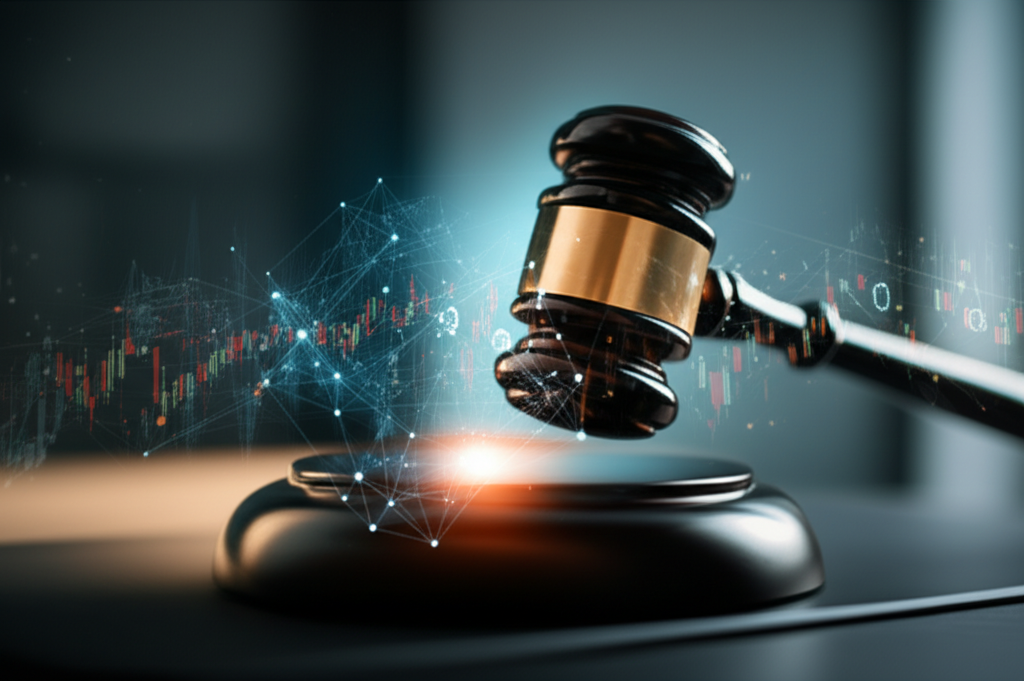Navigating Blockchain’s Transformation in Finance and Beyond
The blockchain landscape is undergoing a profound transformation, marked by significant advancements in institutional adoption, retail innovation, and new regulatory challenges. This evolution moves distributed ledger technology beyond initial speculation into practical, real-world applications reshaping various industries. From global financial giants exploring novel uses to retail platforms democratizing access, and municipalities grappling with integration complexities, blockchain’s influence is expanding across the global economy.
Institutional Embrace: JPMorgan’s Blockchain Initiatives
One of the most compelling narratives in the contemporary blockchain space is the deepening engagement of traditional financial institutions. JPMorgan Chase, a titan in the global banking sector, provides a prime example through the exploratory work of its dedicated blockchain unit, Onyx. This specialized division investigates how blockchain technology can address long-standing inefficiencies and transparency issues within various financial markets. A particularly noteworthy area of their focus involves the tokenization of carbon credits. This initiative aims to transform a historically opaque and illiquid market into a more transparent, efficient, and accessible ecosystem.
By tokenizing carbon credits, JPMorgan’s Onyx unit seeks to convert these traditional assets into digital tokens on a blockchain. This process imbues the credits with immutability, transparency, and divisibility. Once tokenized, these credits can be traded more efficiently, their provenance and retirement tracked with greater precision, and the risk of double-counting or fraudulent claims significantly reduced. For corporations striving to meet ambitious ESG targets, a blockchain-based carbon market could offer unparalleled clarity and assurance, allowing them to demonstrate their climate impact with verifiable data. Furthermore, the increased liquidity fostered by tokenization could attract a broader range of participants, potentially driving more investment into climate solutions. This move signifies a broader recognition within institutional finance that blockchain offers tangible solutions for enhancing trust, efficiency, and auditability in complex, multi-stakeholder systems, integrating decentralized technologies into the core infrastructure of global financial markets, particularly for illiquid assets.
Retail Revolution: Robinhood’s Web3 Expansion
Parallel to institutional advancements, the retail investment landscape is undergoing its own revolutionary shifts, spearheaded by platforms like Robinhood. Known for democratizing access to traditional stock trading, Robinhood is now aggressively expanding its footprint into the Web3 domain, signaling a significant commitment to the future of digital assets and decentralized finance. This strategic pivot involves multiple facets, most prominently the development and planned launch of its own proprietary blockchain, likely a Layer 2 solution. The decision to build a dedicated Layer 2 blockchain underscores Robinhood’s ambition to control its own infrastructure, offering enhanced scalability, lower transaction fees, and greater customization for its burgeoning crypto and tokenized asset offerings. This positions Robinhood not just as a trading venue but as a significant infrastructure provider within the blockchain ecosystem.
Complementing its blockchain infrastructure, Robinhood is making waves with the introduction of “Stock Tokens” in the European Union. This innovative offering allows users to trade tokenized versions of traditional stocks, blurring the lines between conventional securities and digital assets. Tokenized stocks are digital representations of traditional shares, issued on a blockchain, which can potentially offer 24/7 trading availability, faster settlement times, and the possibility of fractional ownership. This development highlights the accelerating trend of real-world asset (RWA) tokenization, where tangible and intangible assets are brought onto the blockchain to unlock new liquidity and utility. Beyond tokenized stocks, Robinhood is also significantly expanding its broader crypto suite, catering to the growing demand for diverse digital asset services. This includes perpetual futures contracts for cryptocurrency trading and staking services for proof-of-stake (PoS) cryptocurrencies, allowing users to earn rewards by locking up their crypto assets. These combined offerings paint a comprehensive picture of Robinhood’s ambitious strategy to become a dominant player in the converged worlds of traditional finance and Web3.
Regulatory Realities: The Detroit Lawsuit
However, the rapid pace of innovation in the blockchain space is not without its significant challenges, particularly in navigating existing legal and regulatory frameworks. A stark reminder of these complexities comes from the city of Detroit, which has initiated a lawsuit against a Florida-based blockchain real estate company. This legal action reportedly centers on allegations related to the proper and legally compliant use of blockchain technology in real estate transactions, specifically concerning deed transfers or property ownership records. The broader implication is clear: the integration of novel blockchain solutions into established, highly regulated industries like real estate presents considerable legal hurdles.
The promise of blockchain in real estate lies in its potential to enhance transparency, reduce fraud, streamline transactions, and lower costs. Yet, these benefits must be reconciled with existing legal precedents, property recording systems, and consumer protection laws. The Detroit lawsuit serves as a critical case study illustrating the regulatory ambiguity that often surrounds blockchain applications. It highlights the imperative for blockchain companies to not only build technologically sound solutions but also to meticulously ensure their legal compliance and integration with legacy systems. For municipalities, this situation underscores the need for clear guidelines and potentially new legislation to accommodate blockchain-based property transactions, ensuring public trust and the integrity of land records. This legal confrontation is a bellwether for the growing pains of a technology seeking to revolutionize traditional sectors, emphasizing that innovation must proceed hand-in-hand with robust legal and regulatory adaptation.
Conclusion
The blockchain landscape is rapidly evolving, driven by increasing institutional adoption, innovative retail platforms, and emerging legal challenges. JPMorgan’s strategic exploration into tokenized carbon credits and Robinhood’s ambitious Web3 expansion exemplify this convergence of traditional finance and decentralized technology. Concurrently, legal hurdles like the Detroit lawsuit underscore the critical need for comprehensive and adaptable legal frameworks. Overcoming these technical, legal, and regulatory complexities will be paramount to unlocking blockchain’s full potential, fostering a more interconnected, efficient, and inclusive global economy.

